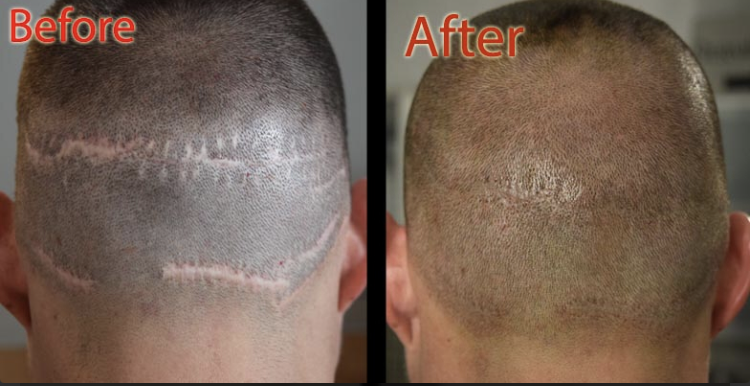Scalp micropigmentation for hair loss is not like tattooing in the practical world. It might be similar to a tattoo in the literal sense but there are major differences between both procedures. So let’s explore SMP versus tattoo to learn more about scalp micropigmentation as a hair restoration procedure.
Ease And Simplicity
Scalp micropigmentation is a fairly easy technique to camouflage hair problems. It is merely an easy procedure for an experienced and skilled technician to create the look of a buzzed head. SMP is a minimally invasive procedure, unlike body art or tattoo which is more invasive. The scalp artist makes tiny, shallow punctures in the skin. It produces almost instant results. You need only 2 or 3 sessions to see how scalp micropigmentation can transform your looks for the better. Better still, with regular touch-ups, the procedure lasts for a lifetime.
SMP versus Tattoo Tools
However, the quality of results depends on the type of pigments, needles, SMP pen, and other tools used. SMP professionals cannot use the same ink used in classic body tattoos for scalp micropigmentation. Sadly, such type of SMP will not last long and there is a high chance of ink discoloration, migration, or blurring.
Tattoo inks can be unreliable and might easily fade, spread, or shift. SMP pigments, on the other hand, use natural ingredients that fade gently over a period of time. A little amount of fading is natural as the body starts to attack foreign ink particles. Tattoo inks achieve hard, thick lines that do not mimic natural hair. They are bigger in size and look unnatural. SMP pigments are natural and designed to blend with hair and skin tones.
SMP needles are specialized and designed to be fine. These microneedles are suitable for creating the illusion of hair and follicles. Scalp micropigmentation has come to be popular as a hair restoration technique that creates fine, realistic hairs that are undetectable with the naked eye.
SMP uses a specialized machine for the craft while a tattoo gun does not work for the procedure.
Tattoo artists have not undergone medical training or certification in the field of scalp micropigmentation. The pigment is a foreign substance, which is not harmful to the body. SMP ink is not deposited as deep as tattoo pigment. When deposited in the body, your immune system will slowly break it down, and so will your white blood cells that cause the lightening of the pigment. Anyone with a strong immune system might need frequent touch-ups as the chances of fading are slightly higher.
Does a Tattoo Artist Fit for the Job?
No, a tattoo artist is not the right fit for a scalp micropigmentation job. Rather, you should look for a professional SMP expert, who enjoys a reputation for their skills and expertise in scalp micropigmentation. When you hire a skilled SMP technician, you can trust them for using the proper tools and inks.
DermiMatch Clinic SMP practitioners in Arizona have a long history of working with men and women suffering from hair loss problems. They enjoy a track record of revitalizing the look of hair using industry best practices and following advanced SMP techniques. Their goal is always to help clients get back their confidence. Get in touch with Arizona scalp micropigmentation professionals today.










